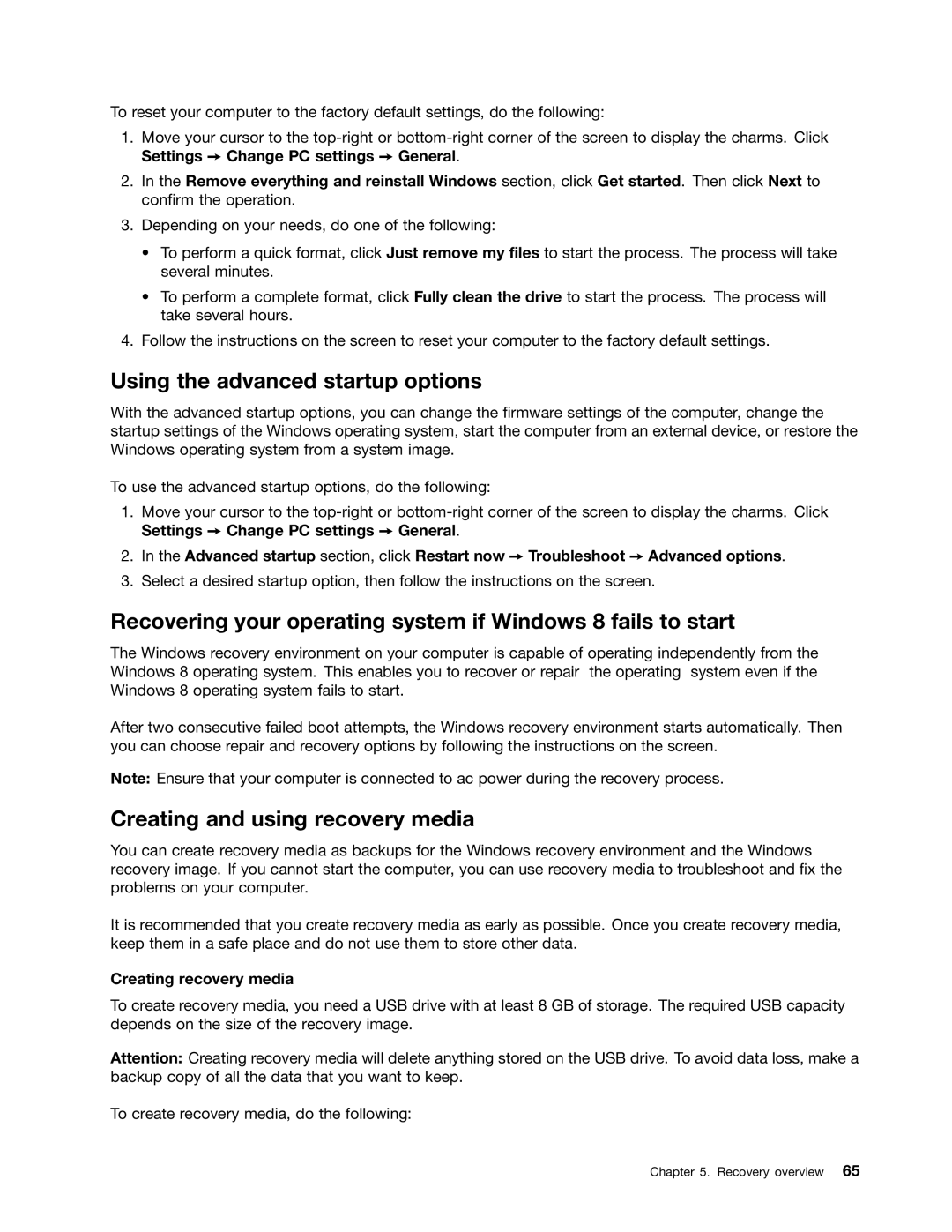To reset your computer to the factory default settings, do the following:
1.Move your cursor to the
2.In the Remove everything and reinstall Windows section, click Get started. Then click Next to confirm the operation.
3.Depending on your needs, do one of the following:
•To perform a quick format, click Just remove my files to start the process. The process will take several minutes.
•To perform a complete format, click Fully clean the drive to start the process. The process will take several hours.
4.Follow the instructions on the screen to reset your computer to the factory default settings.
Using the advanced startup options
With the advanced startup options, you can change the firmware settings of the computer, change the startup settings of the Windows operating system, start the computer from an external device, or restore the Windows operating system from a system image.
To use the advanced startup options, do the following:
1.Move your cursor to the
2.In the Advanced startup section, click Restart now ➙ Troubleshoot ➙ Advanced options.
3.Select a desired startup option, then follow the instructions on the screen.
Recovering your operating system if Windows 8 fails to start
The Windows recovery environment on your computer is capable of operating independently from the Windows 8 operating system. This enables you to recover or repair the operating system even if the Windows 8 operating system fails to start.
After two consecutive failed boot attempts, the Windows recovery environment starts automatically. Then you can choose repair and recovery options by following the instructions on the screen.
Note: Ensure that your computer is connected to ac power during the recovery process.
Creating and using recovery media
You can create recovery media as backups for the Windows recovery environment and the Windows recovery image. If you cannot start the computer, you can use recovery media to troubleshoot and fix the problems on your computer.
It is recommended that you create recovery media as early as possible. Once you create recovery media, keep them in a safe place and do not use them to store other data.
Creating recovery media
To create recovery media, you need a USB drive with at least 8 GB of storage. The required USB capacity depends on the size of the recovery image.
Attention: Creating recovery media will delete anything stored on the USB drive. To avoid data loss, make a backup copy of all the data that you want to keep.
To create recovery media, do the following:
Chapter 5. Recovery overview 65
